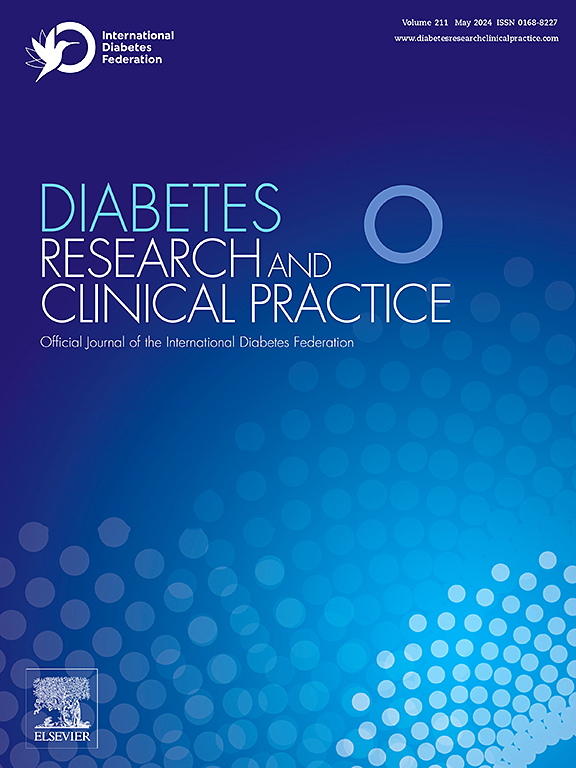Impact of physical activities in metabolic dysfunction associated steatotic liver disease, sarcopenia, and cardiovascular disease
IF 6.1
3区 医学
Q1 ENDOCRINOLOGY & METABOLISM
引用次数: 0
Abstract
Background and Aims
There are no comprehensive studies that investigated differential effects of physical activity (PA) types on metabolic dysfunction associated steatotic liver disease (MASLD) and their associations with sarcopenia and cardiovascular disease.
Methods
A cross-sectional analysis using data from 66,021 participants from the Korean National Health and Nutrition Examination Surveys 2007–2020. Aerobic PA (A-PA) was defined as ≥ moderate-intensity 150 min/week or high-intensity 75 min/week; Muscle strengthening PA (MS-PA) was defined as ≥ 2 days/week of muscle strength training. Multicomponent PA included A-PA and MS-PA. The atherosclerotic cardiovascular disease (ASCVD) risk was determined by the pooled ASCVD risk score.
Results
The prevalence of MASLD was lower in all PA groups compared to physically inactive individuals. Among individuals with MASLD, multicomponent PA was associated with a lower ASCVD risk, compared with other groups (OR = 0.74, 95 % CI = 0.73–0.75 for A-PA; OR = 0.70, 95 % CI = 0.68–0.64 for MS-PA; OR = 0.62, 95 % CI = 0.61–0.64 for multicomponent PA). Sarcopenia risk was decreased among physically active individuals with MASLD (OR = 0.77, 95 % CI, 0.76–0.77 for A-PA; OR = 0.97, 95 % CI = 0.96–0.98 for MS-PA; OR = 0.57, 95 % CI = 0.57–0.58 for multicomponent PA).
Conclusions
Regardless of types of exercise, physically active individuals had lower risks of MASLD, sarcopenia, and ASCVD.
体育活动对代谢功能障碍相关脂肪变性肝病、肌肉减少症和心血管疾病的影响
背景和目的目前还没有全面的研究调查体育活动(PA)类型对代谢功能障碍相关的脂肪变性肝病(MASLD)的不同影响及其与肌肉减少症和心血管疾病的关系。方法对2007-2020年韩国国家健康与营养调查66,021名参与者的数据进行横断面分析。有氧PA (A-PA)定义为≥中等强度150分钟/周或高强度75分钟/周;肌肉强化PA (MS-PA)定义为≥2天/周的肌肉力量训练。多组分PA包括A-PA和MS-PA。动脉粥样硬化性心血管疾病(ASCVD)风险由合并ASCVD风险评分确定。结果与不运动人群相比,所有PA组的MASLD患病率均较低。在MASLD患者中,与其他组相比,多组分PA与较低的ASCVD风险相关(OR = 0.74, 95% CI = 0.73-0.75;MS-PA的OR = 0.70, 95% CI = 0.68-0.64;OR = 0.62, 95% CI = 0.61-0.64)。体力活动的MASLD患者的肌少症风险降低(OR = 0.77, 95% CI, A-PA为0.76-0.77;MS-PA的OR = 0.97, 95% CI = 0.96-0.98;多组分PA OR = 0.57, 95% CI = 0.57 - 0.58)。结论:无论运动类型如何,积极运动的个体患MASLD、肌肉减少症和ASCVD的风险较低。
本文章由计算机程序翻译,如有差异,请以英文原文为准。
求助全文
约1分钟内获得全文
求助全文
来源期刊

Diabetes research and clinical practice
医学-内分泌学与代谢
CiteScore
10.30
自引率
3.90%
发文量
862
审稿时长
32 days
期刊介绍:
Diabetes Research and Clinical Practice is an international journal for health-care providers and clinically oriented researchers that publishes high-quality original research articles and expert reviews in diabetes and related areas. The role of the journal is to provide a venue for dissemination of knowledge and discussion of topics related to diabetes clinical research and patient care. Topics of focus include translational science, genetics, immunology, nutrition, psychosocial research, epidemiology, prevention, socio-economic research, complications, new treatments, technologies and therapy.
 求助内容:
求助内容: 应助结果提醒方式:
应助结果提醒方式:


